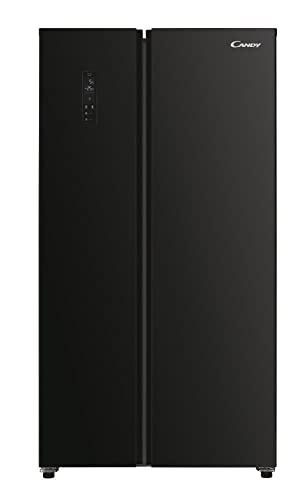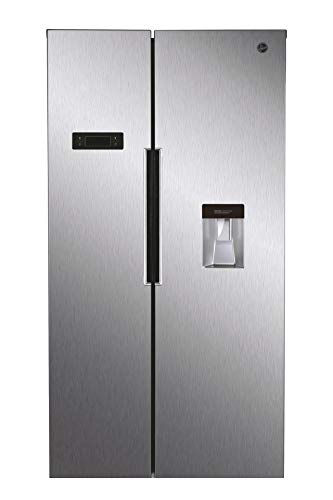15 Best Fridges Bloggers You Need To Follow
페이지 정보

본문
 How to Keep Your Fridge Running Smoothly
How to Keep Your Fridge Running Smoothly Refrigerators are available in a vast array of shapes and sizes. They can fit in tight spaces including dorms.
Refrigerators are available in a vast array of shapes and sizes. They can fit in tight spaces including dorms.Certain models are compatible with smart devices. They let you monitor your fridge from afar and troubleshoot any problems that may arise. You can also use voice commands to control them.
Noise
Best Fridges make a wide range of sounds when they are operating. Some of these noises are more prominent than others. Before calling a repair service, try to identify the cause of any sounds you hear.
Rattling
The fridge freezer sale can rattle when there's not enough space between it and the wall or cabinet or if it's sitting at an unlevel angle. This is easy to repair - all you need to do is ensure there's at least a couple of inches of space between the sides and then adjust the legs of your best fridge freezers uk or leveling screws to raise or lower it according to.
Hissing
The compressor can make a noise when cooling your food. This is normal, and it is caused by the compressor oil or flow of refrigerant that is flowing through the system. If you're concerned you are concerned, track how often the compressor cycles. Contact a repair company immediately in the event that this occurs more often than normal.
Squeaking
Fridges may be noisy if their coils or fans are dirty. If you hear a squeaking sound from your fridge, make use of an attachment for a vacuum cleaner, a rag, and water or dish soap and warm water to wash the fan and coils. This should be done at least twice every year or more often if your refrigerator is older or used a lot.
Clicking
A clicking sound can also be heard from a fridge. It is usually due to freezing around the fan of the freezer. This can be resolved with a manual defrost, but it is likely to recur until the issue is resolved by a professional service.
If you hear clicking, turn the fridge back on. If you have an ice maker installed to your fridge, this sound could be caused by it. Be sure to switch it off when you are not using ice constantly.
The hum from your fridge is normal, but it may be louder at certain times of the day, or following large quantities of stock or freezing processes. This is because the refrigerator needs to work harder and faster to keep your food cold, but it is not an indication of a problem with the refrigerator or its performance.
Dust
Household dust attracts dirt bacteria, and other microorganisms as well as traces of the everyday exposure to chemicals in our homes. The tiny particles can cause allergic reactions and inhalation and are a perfect substrate for microbes, including those that could cause infection if they come into direct contact with a cut.
It's impossible to completely clean a fridge however, regular cleaning can reduce the accumulation of dust and keep the temperature stable. A dirty fridge also consumes energy because it overheats and operates inefficiently. If you suspect your fridge is making louder noises than usual, or if it's running out of power due to overworking it It's probably time to call in the professionals.
Unlike other airborne particulates, dust doesn't simply drift in from outside it is believed. It's made up of resuspended dust from the house which could be contaminated with lead or other toxic substances. It also contains mold, pollen, and car exhaust. It also contains a number of legacy pollutants, including DDT which was banned over 50 years ago.
Certain compounds, such as flame retardants such as decabromodiphenylether, volatilize into the air. However, the majority chemicals found in house dust come from objects that are thrown off, like electronic equipment. High-molecular-weight substances, such as surfactants used in cleaners and paint strippers, also migrate directly into dust.
A soiled refrigerator can impact your health, as well as contaminating food. It can contain allergens, like pet dander or droppings from cockroaches, which can cause asthma attacks and allergic reactions. It also contains bacteria spores, like staphylococcus aureus, that can cause infections if they make their way into wounds that are open.
Researchers have discovered that a wide range of health conditions can be traced to contaminated dust, from cardiovascular disease to cancer to leukemia and inflammatory intestinal disease. A recent study revealed that the homes of children diagnosed with leukemia tended to have higher levels of polycyclic aromatic hydrocarbons, PBDEs and PCBs in their dust than homes of healthy kids.
Condenser Coils
When refrigerators are running properly, the coils on the back and front of the appliance should be able to dissipate the heat created by the compressor. If these radiator-like components are covered in pet hair, dust or lint, the compressor has to work hard trying to cool the refrigerator, which wears down the unit. That's why it's so important to regularly clean the coils.
If you're looking to tackle the task yourself, it is recommended that you unplug the refrigerator and switch off the power source prior to starting. This will reduce the chance of electrocuting yourself or family members when working on the appliance. If you're allergic to dust it's a good idea for you to wear a mask for your face. Then, you'll need to find the coils. They are usually located at the back of the refrigerator or, in some cases, at the front and base. If you are unsure where to look, consult your fridge's owner manual or contact the manufacturer for more information.
Once you've located the coils, take off the access panel (if there is one) and alternate between vacuuming them using the hose's narrow attachment or brushing them with condenser cleaning brushes. It is important to take your time while doing this to avoid bending or damaging the coils. Replace the kick panel, or move the refrigerator to its position, then connect it to the electrical outlet.
If you're not confident doing this by yourself, you could always seek out a professional. But it's much cheaper and less trouble to simply keep up with the cleaning routine to avoid the issue from arising in the first place.
Maintenance
Fridges are hard-working appliances that are running throughout the day and night to cool your food. To ensure they do their jobs well, they need regular maintenance. This simple preventive maintenance will keep them running smoothly for years to come.
A simple task is clean the door seals. Jelly and other foods that are sticky can cause a buildup and stop gaskets from sealing properly and allowing cool air to escape through tiny cracks. Every few months, clean them clean using a baking soda solution and warm water using a sponge or toothbrush.
The fan in the rear of the refrigerator is a different location to look at. It can be noisy if it's clogged with paper, insulation and even mice (gasp). Unplug the refrigerator and take it off all the shelves and remove any parts that are removable. Clean the coils and the area around them with a vacuum cleaner with the hose attachment. Make sure to turn off the fridge and freezer off when you're finished.
It is recommended to check the owner's manual for details on where to find the coils, the fan and the tools to clean it with. It's recommended to read the warranty carefully, to be sure you understand what is and isn't covered.
- 이전글Treadmill Incline Foldable Tools To Streamline Your Daily Life Treadmill Incline Foldable Trick Every Person Should Be Able To 24.12.15
- 다음글What Is Subaru Impreza Key And Why Is Everyone Speakin' About It? 24.12.15
댓글목록
등록된 댓글이 없습니다.